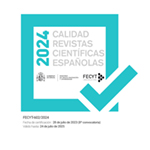Paz o conflicto: narrativas mediáticas sobre la movilización indígena ecuatoriana
Resumen
Este artículo examina 180 discursos provenientes de una selección de 1274 relatos informativos difundidos por los medios de comunicación de Ecuador durante las protestas sociales de 2019 a 2022. Se enfoca en la construcción del "otro" como enemigo y el uso de un lenguaje que estigmatiza a los líderes indígenas, observando la participación reiterada de actores políticos, periodísticos y sociales, cuya retórica sigue influyendo en el panorama mediático ecuatoriano actual.
El análisis se basa en el paradigma del periodismo de paz de Johan Galtung (2015), la Construcción del Enemigo de Umberto Eco (2013) y los enfoques escaladores o desescaladores de la cobertura mediática de Shabir Hussain (2023). La cobertura del paro nacional intensifica el fenómeno de reticencia informativa y censura que obstruye la exposición de realidades, adopta un tono beligerante al diseminar nociones asociadas al terrorismo, y conforma la presunción sin evidencia como elemento central de su estructura narrativa.
Descargas
Descarga artículo
Licencia
La revista Estudios sobre el Mensaje Periodístico, para fomentar el intercambio global del conocimiento, facilita el acceso sin restricciones a sus contenidos desde el momento de su publicación en la presente edición electrónica, y por eso es una revista de acceso abierto. Los originales publicados en esta revista son propiedad de la Universidad Complutense de Madrid y es obligatorio citar su procedencia en cualquier reproducción total o parcial. Todos los contenidos se distribuyen bajo una licencia de uso y distribución Creative Commons Reconocimiento 4.0 (CC BY 4.0). Esta circunstancia ha de hacerse constar expresamente de esta forma cuando sea necesario. Puede consultar la versión informativa y el texto legal de la licencia.










